Multi-Channel Attribution: Understanding Customer ROI
Once upon a time, in the days of TV ads and billboards, it often only took a handful of well-crafted touchpoints with your brand before someone made a purchase.
Fast-forward to the age of digital media, where buyers have built an immunity to advertising, and it can sometimes take hundreds of brand interactions before someone buys your product or service.
This now means that one of the most difficult parts of the modern marketer’s job is demonstrating the ROI on each touchpoint your customer has with your brand – and how it ultimately leads to a sale.
Marketing teams now need to be able to analyse, explain and report on the effectiveness of each campaign at a granular level, down to each individual audience interaction across multiple devices and ad platforms.
Enter, Multi-Channel Attribution.
What is Multi-Channel Attribution?
Have you ever asked yourself…
How much influence do my Facebook posts have on customer purchases? And what about my email nurture campaign? And if most of my conversions are coming from Google ads, should I still continue to invest in paid social media?
These are the kinds of questions you can answer using Multi-Channel Attribution (MCA) analysis.
Multi-Channel Attribution is simply understanding and applying specific credit or weight to each of your marketing channels. It looks at which activities lead to or ‘attributed’ to your final sale.
Understanding this helps you optimise and scale the marketing that works, and rework what doesn’t. Reporting these findings back to stakeholders demonstrates the real value marketing is bringing to their business.
What can Multi-Channel Attribution do for your company?
MCA enables a better understanding of your marketing strategy.
It shows you what’s delivering results and what’s missing the mark.
Picture this…
A potential customer is at breakfast, scrolling through their Facebook feed on their phone. They notice your ad as they pass but don’t click on it.
This is your first touchpoint.
This customer then heads to LinkedIn to network and sees another post for your product. This time they click and visit your website. They then finish their breakfast and head off to work.
Touchpoint two and three.
The next morning, they check their Instagram and see another one of your ads. This time they click on your ad, go through your website and purchase your product.
The fourth and fifth touchpoints.
BUT THEN…
A different customer goes through the exact same marketing journey and leaves your website without purchasing a product.
So here’s the question…
Which of these touchpoints influenced the final sale?
MCA weights the effectiveness of the Facebook, LinkedIn and Instagram ads on guiding the customer through their buying journey.
A MCA analysis tool may also highlight that only 50% of website visits result in a resultant purchase.
From this insight, you would begin investigation into why your website isn’t converting more customers. For example, you might find it’s an issue with user-experience of your website (e.g. the ease of use of your checkout) or buyer behaviour (e.g.your price point may not be right or customers might expect deals like free shipping or checkout discounts).
Channel Attribution Analysis Models
There are two types of attribution models used to demonstrate the customer journey: Single Interaction and Multi-Channel models.
Single Interaction Attribution Models
Single-Channel Attribution assigns 100% of the sale to a singular marketing touchpoint regardless of the number of previous interactions the customer has had with the business.
If you’re only running one or two campaigns, the simplicity of this model may be appealing.
However, this model of attribution won’t help you better understand or effectively allocate your marketing spend. First and last touch modelling may also sway results in favour of particular advertising platforms.
We’ll use our example from above to illustrate each model.
- First Touch
First touch attribution assigns 100% of the conversion credit to the very first touch-point that the customer interacts with. This model is offered in most analytics tools, making it simple and easy to get started.
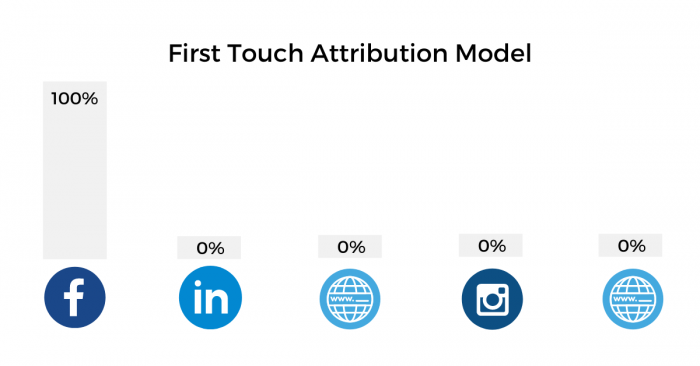
- Last Touch
Last touch attribution is more commonly used. This model assumes that the last touch-point in the campaign is 100% responsible for the sale.
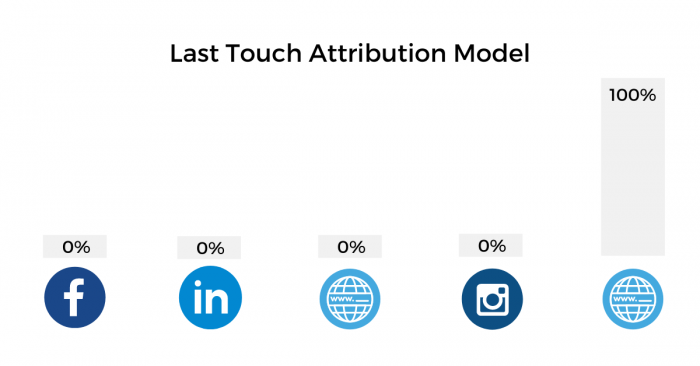
Multi-Channel Attribution Models
- Linear Attribution
The Linear Attribution Model is the simplest model for MCA because it gives equal credit to each individual touchpoint of the buying journey.
Each touchpoint is assigned the same amount of revenue credit, a percentage calculated by dividing the whole value of one conversion by the total numbe犀利士
r of touchpoints along a buying journey.
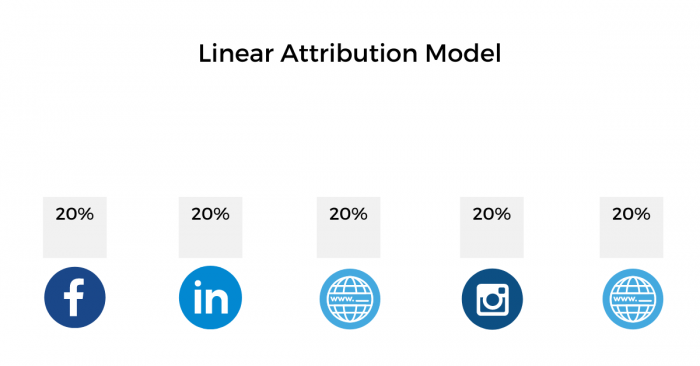
- Time Decay Attribution
The Time Decay Attribution Model assumes a higher percentage of revenue credit the closer a touchpoint is to the sale of the product or service.
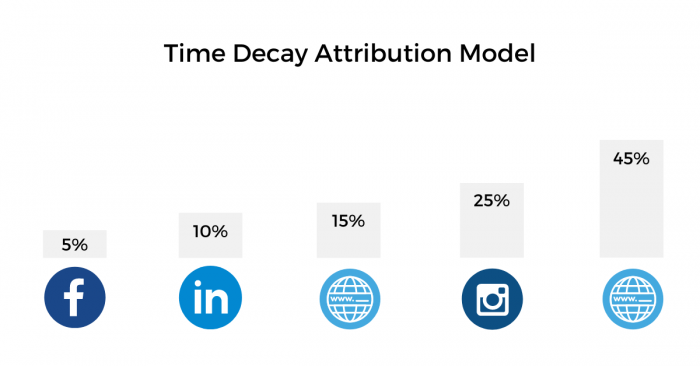
- U-Shaped Attribution
The U-shaped model gives the first and last interaction in a campaign the most weight, and then splits the remaining weight among every touch-point in between.
It usually looks something like this:
- 40% of credit goes to the first interaction
- 40% to the last interaction
- 20% split among interactions in the middle
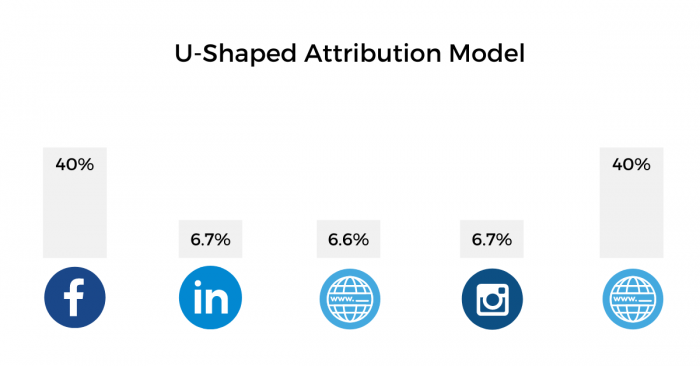
The Best Automated Attribution Analysis Tools for 2020
Despite the fantastic insights MCA analysis can provide, it can be overwhelming and time consuming to maintain this level of reporting.
But there are some awesome tools to help with this that can more accurately (and less time consumingly) reflect live ROI insights based on new incoming data from your campaigns.
Here are some that Eloquent use and recommend:
Hubspot brings together CRM, analysis and strategy development. HubSpot stands out because of its user-friendly integration capabilities across multiple campaigns. If you need a platform to align your marketing effort with your sales log, whilst also keeping groups categorised across the business areas, HubSpot is made to cover all bases.
If you’re new to MCA, Google Analytics 360 is a great place to start. Start at a basic level, then work your way up to thoroughly understand how well your money is being spent. Being a Google product, its multi-channel funnels integrate perfectly with Google AdWords and doubleclick search, making it easy to transfer performance metrics between them.
The future-proofed Altitude has machine learning forecasts, customer behaviour analysis and consumer latency testing.
The only thing this tool can’t do is make your dinner.
If you’re willing to invest a decent amount of time setting up and running campaigns using an extremely in-depth platform for MCA, Altitude is a great place to optimise your campaigns and marketing insights.
This is the tool for you if you’re looking for a program that can be used with any eCommerce platform – especially if you have built your own site and can’t find a way to track your customer journey. LeadsRx helps you to evaluate which marketing platforms get you the highest possible ROI and help allocate eCommerce advertising expenses.
What does Multi-Channel Attribution mean for you as a Marketer?
A huge responsibility for modern marketing teams is reporting ROI and knowing which campaigns, and which parts of those campaigns, are most effective.
Multi-Channel Attribution analysis helps you track this, so you allocate marketing resources in a way that successfully acquires new customers and drive business growth.
Our team at Eloquent can help you implement the right marketing tools that help you track and report on multi-channel campaign ROI, so you can spend less, and convert more. Get in touch today.

